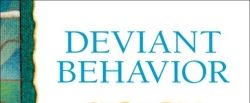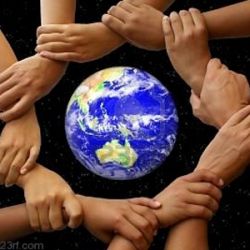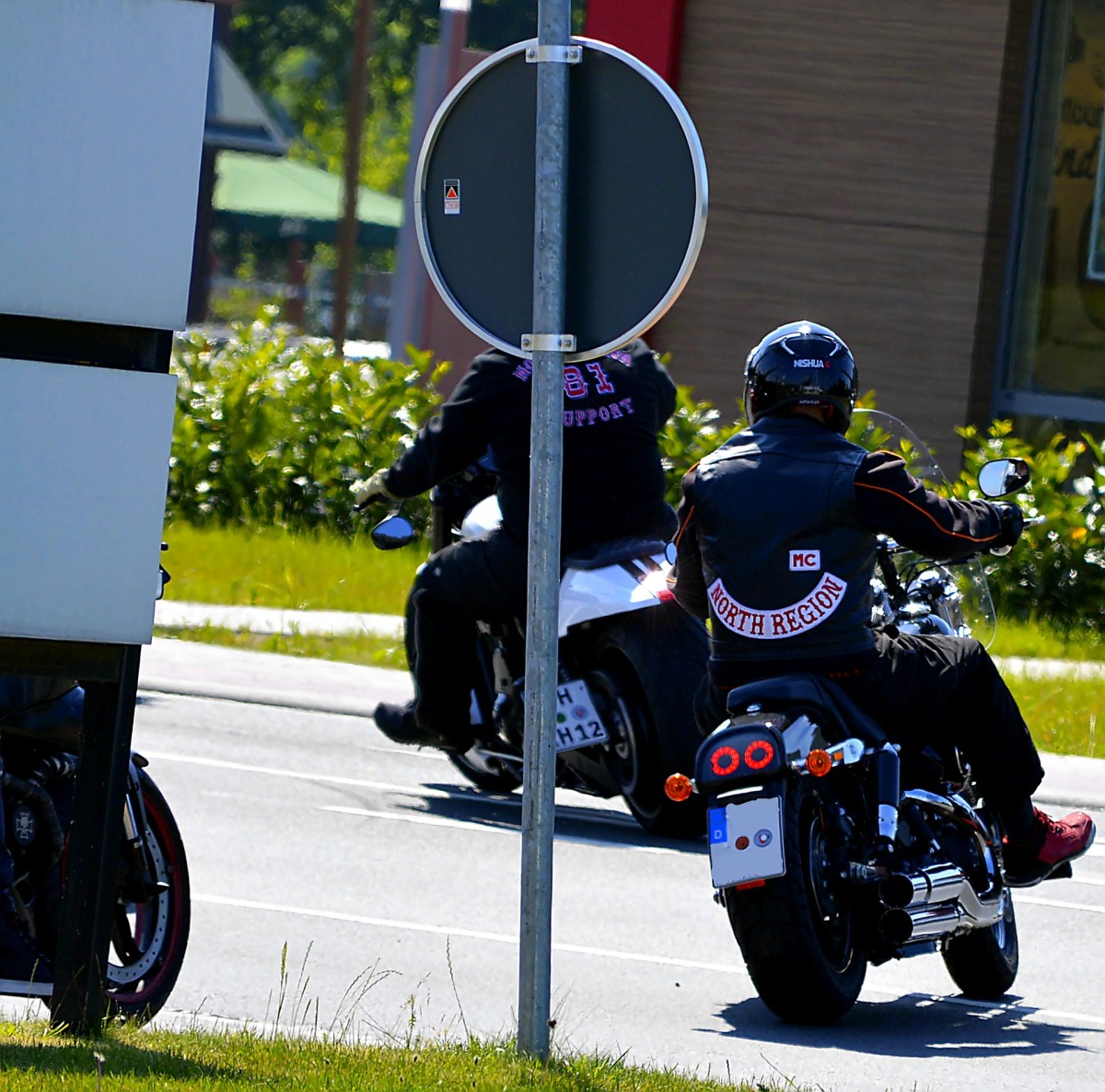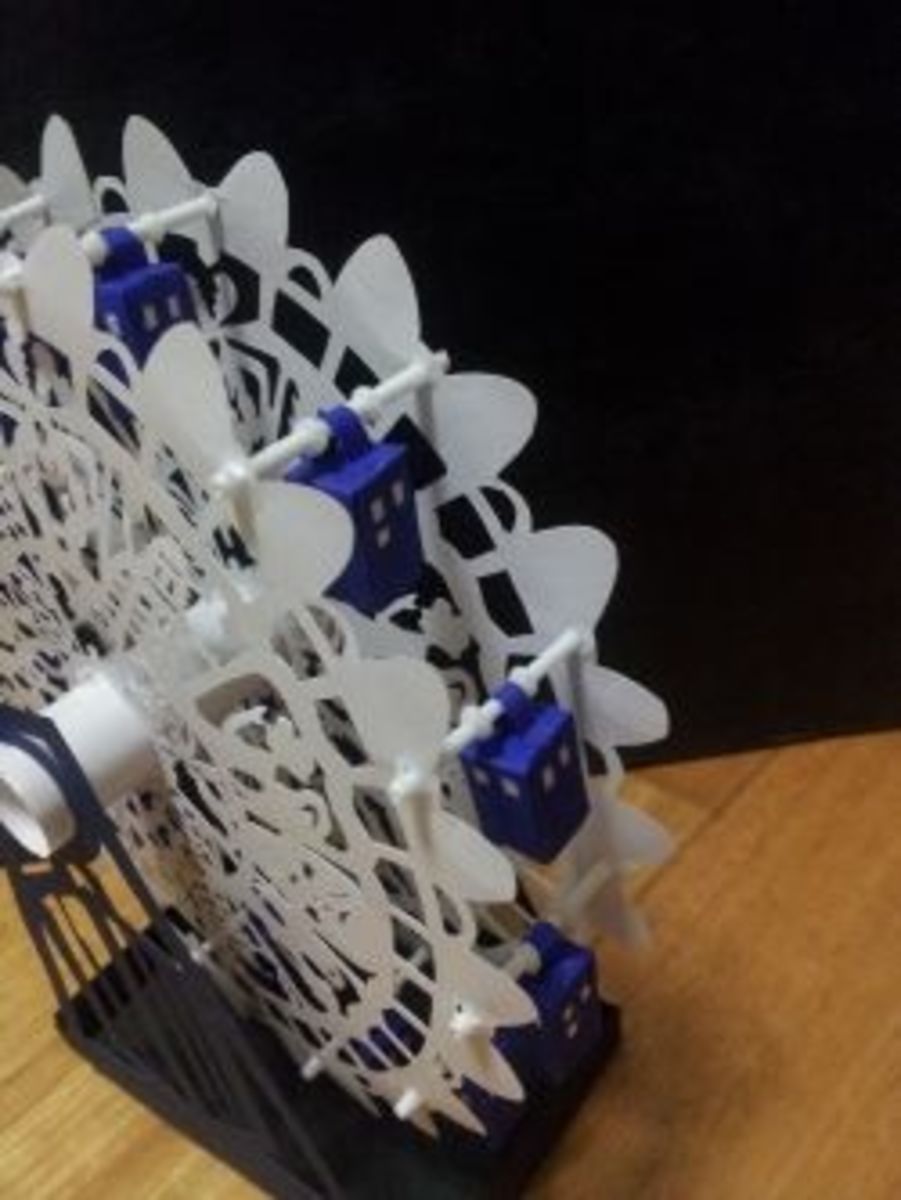Sociology

Deviant Behavior
In the Middle East society men can hold hands while walking down the street, but homosexuality is still illegal. Most of the United States homosexuality is legal and support is better as time goes on. Older people in the United States can accept it in society, but personally do not understand it and find it deviant. Another form of deviancy is in a form of music, while soul, country, and rock n' roll are accepted in society. Rap amongst some people are considered deviant by classing themselves outside of the norm of society, making it deviant to a large class of people. Another form of deviancy is when poor people and minorities commit crimes, even murder; because of their classification of they would be considered deviant.
If a person of high society or wealth committed these crimes it would be considered the norm of society because when you have money, it would be much more accepted in society. In the norm people with wealth and upper society would not consider as deviant. They would consider as sick or mentally ill, while people with lower class and poor people are considered deviant. The wealthy class of society, having upper class is not considered as bad as lower class society as if they were guilty of the same crimes. People of wealth and upper class society are in the media more because they are powerful and rich, the poor people of lower society by upper society are considered to be more out of the norm of society.

Evolution of Formal Organization
Over the past century the largest group of people gathered in small gatherings of neighbors, friends, and families. In current times, people seem to lean more toward formal organizations. Large secondary groups had assembled to accomplish their goals most efficiently as they can. Formal organizations, such as, large corporations and government agencies are completely different from smaller organized groups. In their lack of individualism and the past formally planned atmospheres, it is amazing when people think of 300 million members of United States Society that they could be organized to control the paving of roads, the IRS, education, to the United States Postal Service to perform their duties. The United States rely on large formal organizations.
There are several types of formal organizations, mainly three types, such as, utilitarian organizations, which covers the majority of people who choose to work or belong to an utilitarian organization that is a business government agency, or schools. Most people choose to join one or another of these organizations to make some kind of income. Normative organizations are the second form of organization. People do not do this organization to make money, but to carry out a goal they think it is morally acceptable usually called voluntary associations. These include community service groups like Amnesty International, the Parent Teacher Association, League Of Women Voters, the Red Cross, Political Parties, and religious organizations from the world’s point of view, the United States people and higher income countries are those that usually join these voluntary associations. A coercive organization is the third of the formal types of organizations were people were forced to join organizations, such as, prisons or treatments (mental hospitals). Coercive organizations usually have locked doors and barred windows and are managed security personnel.
Organizations exist all over the world. How the organization performs depends not only its own achievements and policies but also, depending on the organizations environment from outside the organization affects the operation of the organization. Those factors are current events, technology, economic and political trends, the available workforce, and other organizations.
Economic and political trends change the organization because all organizations are either hurt or helped by the current of economic or recession. Industries from abroad make them face competition as changing in the laws, such as, environmental issues at home. The rise of energy prices followed by the 2005 hurricanes that devastated the gulf states plus 2006 election that transferred Congress of the United States from republicans to democrats and the 2008 trends, which gave the White House and Congress of the United States democratic control, affecting government and business organizations.
Micah needs to understand that the difference between small groups and formal organizations. Activities are equally shared among all members. Hierarchy is very informal or non existent, while the normal activities are general and informally applied. The member criteria variable often based on personal kinship with variable relationships, while its communications are casual and face-to-face its focus is people oriented. However, in formal organizations activities are distinct and highly specialized while hierarchy is clearly defined according to position. In the normal of this group are clearly defined by rules and regulations. The membership criterion is technical competence to carry out assigned tasks. Their memberships are typically secondary with selective primary ties while communications are typically formal in writing since the formal organization focus is task-oriented. The typical pyramid shape “Conventional Bureaucracy” is topped off by the CEO followed by the top executives, division leaders, middle managers, and ranking filed workers. The pyramid has a clear chain of command orders go downward from the top of the pyramid to the bottom of the pyramid. The reports of performances come upward from the bottom of the pyramid with organization having many rules and regulations. Jobs are highly specialized while the football shape called “open, flexible organization” starts with the CEO followed by the senior managers and the numerous competing work teams. The open, flexible organization with fewer levels or hierarchy, responsibility for generating ideas created throughout the whole organization, while a large number of workers perform their jobs in groups and have broad understanding of these organization operations.
To switch from a formal organization to an open, flexible organization, his organization is the formal organization would have to get rid of the hierarchy system and just keeping a CEO and senior managers creating a more competing and active work teams. Keeping in mind, with more open and flexible workers below the CEO and senior managers, he would be making decisions shared throughout the whole organization and that instead of having individual leaders, they would have teams, making equal decisions in their jobs.
The article called “Interaction of Learning Organization and Organizational Structure” states that without employees who consistently improved develop and study; there cannot be the learning organization. At the same time, one must stress that the members of the organization who study do not guarantee that the whole organization, which the learning one as it becomes such only after the individual knowledge becomes the organization knowledge.
The prediction between the Conventional Bureaucracy and Open, Flexible Organization is that if the Conventional Bureaucracy continues with their chain of command in the current economic market with high unemployment, the Conventional Bureaucracy that we are on will stay the same. Hopefully within the next couple of years and the economy improves and the country gets rid of the trillion dollar national debt, it may eventually change to an open, flexible organization if democrats and republicans can be able to work in a bipartisan fashion.
Future of Modernization
We could all identify numerous policies and legislative changes that resulted in detrimental human consequences. At the turn of the twentieth Century the mentally ill were institutionalized and placed in asylums, instead of receiving treatment was thought to be one of the most effective to respond to mental illness and its many social problems. Thankfully, the policy has changed. We may think of policy associated with urbanization and inner city poorness and crime in the middle of the 1960s, which led to a massive construction of public housing projects like Chicago’s Robert Taylor Holmes. Reaganomics during the 1990s with its lack of priority given to genuine welfare assistance to the poor, until trickle down economics was not working and Washington was forced to acknowledge. Congress was sending out new policies and legislations like these, which negatively affect members of the poor and oppressed segments of society.
The Ryan White Comprehensive AIDS Resources Emergency Acts is the nation’s biggest and largest stream of HIV legislations with funding of the provisions of HIV services for the uninsured and under insured for the last 20 years. The Act contains funding to be distributed to urban cities. The Act was broken down into four groups with (part A) to each state, (part B) to individuals community-based agencies, (part C) for programs specific to women and children, and, (part D) and to ADAP (AIDS Drugs Assistance Program), giving HIV medications to patients and everyone including the poor. Historically, this kind of funding of services includes medical care ancillary social services, preventions and education and all other aspects of HIV care and previsions.
Congress every five years has the opportunity to monitor service provisions and establish funding priorities. In December 2006, the care acts reauthorization resulted in a name change to the Ryan White HIV/AIDS Treatment Modernization Act, like the change in the name, there was a signification shift in priority of HIV funding for medical treatment and care.
The original version of the CARE (Comprehensive AIDS Resources Emergency) was designed for the emergency fix of the new HIV epidemic and aimed to provide individuals diagnosed with HIV and AIDS in the end of stages of their lives. With the advent of HAART (Highly Active Anti-Retroviral Theory) because of the advance of HAART HIV positive people were living longer and healthier lives, and HIV service provisions change from emergency end of life care to chronic disease management and empowerment of impacted men, women, and children. The CARE Act was renamed to reflect this shift in the face of HIV and AIDS for individuals living with HIV. This change is a powerful reminder that their health outcomes and future look brighter than ever before provided by maintain regular medical care and treatment and regimes.
Another example of modernization in class society mostly comes from the ideas of Karl Marx. Capitalist society pronounced social stratification, agreeing that modern societies to a mass scale. This approach views the heart of modernization as an expanding capitalist economy marked by in equity (Habermas, 1970; Harrington, 1984; Buchler, 2000).
Capitalism a class society theory that follows Marx in the claiming that the increasing scale of social life in modern times has resulted from the growth and greed unleashed by capitalism because the capitalist economy pursues ever greater profits both production and consumption steadily increase.
According to Marx, capitalism rest on “naked self-interests” (Marx & Engels, 1972; 337, Orig. 1848) this self-centeredness weakens the social ties that once united small communities. Capitalism also treats people as commodities; a source of labor and a market for capitalist products.
Capitalism supports science not just as the key to greater productivity. It also as an ideology that justifies the status quo modern societies encourages people to view human well-being as a technical puzzle that can be solved by engineers and other scientific experts rather than through the pursuits of social justice. For example, a capitalist culture seeks to improve health through advances in scientific medicines rather them by eliminating poverty, despite the fact that poverty is a core cause of poor health.
Businesses also raise the banner of scientific logic, trying to increase profits through greater efficiency. Capitalist corporations reached enormous size and control unimaginable wealth as a result of global expansion. From the class-society point of view the expanding scale of life is less a function of Gesellschaft than the inevitable and destructive consequence of capitalist.
The nature of change in value patterns that proceed, accompany and are consequences of modernization is an important and durable issue for students of industrialism. Mobility of rural or traditional occupations to urban or industrial occupations attempts to relate this mobility to difference estimates of value change.
Modernization refers to those social changes that generate institutions and organizations like those found in advance industrial societies. Definitions of modernization all tend to include a similar list of these institutions for the progresses through that they come together. However, the various concepts of modernization different with regard to which of the processes are considered, especially salient. Modernization then involves widespread popular participation, yet the experience of participants in modernization in the pre-requisites, commitment and consequences of this experience are little study and less understood. Rather most assertions about the experience of modernization are derived and deducted from institutional data and relationships. Of this experience, it may not be excessively hyperbolic to state that while most of the sociological assertions about modernization imply rhetoric of behavior. One consequence of this state of affairs is that the sociology of modernization tends to describes actors as representatives of institutions and communities in which they belong or to whose norms their subject.
Modernization is likely to continue in the United States. There will always be capitalist aspects of modernization in society whether it would be a big breakthrough on fuel that does not rely on oil; someone will receive a large amount of money off from it. Around the wide world there will always be modernization. Its part of what society is made upon, discovering new items and making money from those items is always going to be the ways of the world.
Consequences of modernization are that there is not a middle class if we continue with this pace. The poor will become poorer, and the rich will become richer. Ronald Reagan and his regimes were a classic example of modernization.
PREJUDICE AND DISCRIMINATION IN INDONESIA
Under Suharto, discriminated against the Chinese when they migrated into the Indonesian political system, they were identified as different. From the local Indonesian people, yet Suharto, downfall created a shift in the political changes, new political groups were quickly created, which were ethnically based started to promote ethnic understanding. The Chinese changed the law, allowing them to use family names and create Chinese language books and magazines, so they would no longer be marked as Chinese.
On May 21, 1998, followed by 30 years of control, the leader Suharto stepped down from the presidency, allowing the Vice President BJ Habibie to take over. Habibie created a path forward to much greater political freedom. He took away Suharto’s three party system allowing several groups to form. He set an election vote for freedom in Timor.
In 1998, race and class in Indonesia going back to pre-colonial times, had bothered Chinese Indonesians for classing them as minority Chinese Indonesians. The Chinese had hopes on Liberty and democracy to start a higher tolerance and belief, however, in many ways all it brought was hatred and race situations. Under Suharto, a majority of power resided in the head office with party groups in a very weak to the ruling party, Golkar. The two main institutions of government were the bureaucracy and the army who was controlled by Suharto. The people were encouraged to show their happiness for Golkar.
From 1971 to 1998 prompt and many elections were held but led to the same thing, two thirds of the majority of Golkar. Parliament was fairly passive and continued with the economic and political goals of Suharto. Chinese Indonesians were treated the same in a non different way, the political parties targeted them in support in elections. However, the elections were symbolic as a way to illustrate the strength of the regime. Although toward the end of his rule Suharto became interested in Islam, causing a backlash toward the Chinese for their support in non Islamic groups.
Habibie was seen as inferior and illegitimate. He called the assembly to enact a number of major changes. He amended to allow elected representatives of brand new political parties to set in on Parliament. The leaders of each group there were two of them were kept apart while the third one the president and vice president conserve no more than two of five year terms. He ordered elections in Parliament to be held during May or June 1999, allowing anyone to compete for the vote. He also ordered the appointed seats, which was held by the military to shrink slowly based on laws to be created later. He had enabled the CPU to oversea the elections. Laws in January 1999 were created to open fair and also open elections.
The newly created laws immediately created political activity in the Chinese community, creating two new political groups, one Partai-reformasi-tionghoa Indonesian political party to be the first party to create a longstanding ban on Chinese political activity. The Parpindo group lead by H junus jahaja and Jusuf Hamka was created in June 1998. There were other groups such as Civil Rights organizations, which was created a citizens group, yet amongst all the civil social world wind of activity, only one of the Chinese parties was a part of the 1999 elections.
Partaipen Bhinneka Tunggal Ika Indonsia (PBI) despite its size did remarkably good and won three seats in Parliament. It did not succeed in urban areas like Jakarta. The PBI did relatively good in Kalimantan, despite not as a exclusively Chinese party. It was operated by Chinese and non Chinese, and the party is set up of three goals. The first goal is the removal of discriminatory laws. The second goal was to fix a solution to the financial crisis, and the third goal better help for the unemployed. Unfortunately, the Chinese Indonesian reform party and Parpindo could not participate in the elections of the following year 1999. The Chinese Indonesians could not find anybody who wanted to run for the seats in the districts that they had won. Chinese support continued to grow amongst all cities or areas. The Chinese in many urban areas became a part of PAN and Golkar.
New elections for held in June 1999, under the new rules created previously. Megawati Soekarnoputri’s PDI-P obtained 34 percent of the vote and seemed to be the head candidate for the presidential election in the fall. She needed to promote coalition alibis to achieve the majority of the Electoral College system of the super Parliament. The 700 member body of Parliament was held in October 1999. Abdurrahman Wahid, leader of the PKB walked away with the presidency.
The Chinese started to view themselves as Chinese Indonesians and they had communal interest from the ethnically base group. They thought that the larger group would not represent the wants and needs of ethnic Chinese since the other parties were bigger and had more support. What the electoral changes politically meant was under representation the group of parties will remain a major group, controlling the candidates in other areas.
In current Indonesia as a republic provinces, the region of Aceh amongst Yogyakarta with the capital city known as Jakarta. The head limb of the government is run by president along with a vice president with a cabinet of presidential elective officials. The president is voted in by direct vote of the people. The legislative branch of government exist a house of representive, which is called Dewan Perwakilan Rakyat (DPR). In a house of regional representative called the Dewan Perwakilan Daerah (DPD). The DPR holds 550 members, which are elected for the people by the people to serve five year terms. Also DPD consists of political that give input to DPR about issues concerning the regions. Indonesians has created a constitution that provides the Majelis Permunsyawaratan Rakyat (MPR), which monitors impeachments of the leaders of the country, the presidents and constitutional amendments but does not participate in the national policy. The people in MPR are elected by the DPR and the DPD.
Today, there is still discrimination toward the Chinese Indonesian people. The constitution created in 1945 article 26 of the constitution states that the population into indigenous Indonesians and different races but not including the Chinese. This creates differential affects the education, the economy, and issues of state politicians that still demonstrate the racial discrimination against Chinese Indonesians that they continued to deal with to this day.
Punishment
The types of punishment fall into four categories, which are retribution, deterrence, rehabilitation, and societal protection. Retribution is the oldest justification for punishment, plus punishments in societies in revenge for a moral wrong, and in principal punishment should be equal as a crime itself. Deterrence is an early modern approach. The crime is considered a social disruption in which society acts to control. People are viewed as rational and self interested. Deterrence works with the pain of punishment outweighs the pleasures of crime. Retribution is a modern strategy linked to the development of social sciences. Crimes and other deviance as viewed as a result of social problems, poverty and personal problems such as mental illness. Social conditions are improved and treatment is tailored to the offender’s condition. Social protection is a modern approach is to carry out than rehabilitation. When society is unable and unwilling to rehabilitate offenders or reform social conditions, people are protected by the imprisonment or execution of the offender.
Rehabilitation is the best of form of punishment because it helps them function in society, especially since ex cons have trouble fitting in and can not find work. If the individual has been in prison, they are automatically assume the individual is dishonest and a thief, including violence. Former prisoners are stratification to think once in prison the person is a deviate to society, making it difficult for them to return to work and fit back in to society.
Retribution seems wrong to me that some crimes and some people are innocent but convicted guilty that retribution is based on revenge, in principal, punishment should be dealt out equally and severity to the crime itself. Deterrence works to disrupt society, which is in control of the prisoner. Basically, the pain of punishment outweighs the pleasure of the crime. Social protection works when society is unable or unwilling to rehabilitate offenders or reform social conditions, making the people feel that they consider the imprisonment or execution of the offender.
History and culture reveal that punishment and society can be brought together as the same. Social theory does give contrast as the society can comprehend what punishment in America in the social structure. Americans focus on the punishment and social theory, revealing the evidence that the concept of power in relationships. Social control and the people that inherent to what punishments are while focusing shows the opportunity to give a piece of the theory, understanding criminal punishment and make criminal justice policies now and for the future. In essence, punishment represents more rational understanding of punishment sentiment, requiring a more simple approach to the meaning of punishment giving control and domination that make up the punishment in modern society. The norms and laws of society must be necessarily control on the social behavior in society that makes behavior one of the rules in laws. The question is, “Does punishment merit the crime?” I am wondering what the true punishment is for the criminal. When a prisoner goes back into society, he is treated like a criminal outside of social circles; the prisoner is classes as untrustworthy and generally a deviate. When the prisoner serves time of punishment and has already served the time in prison, at what time does the punishment cease. Looking at first degree murder, I do not look at it as punishment to kill them. The worst punishment is to keep them alive, making them suffer for the action of their crime. The same is true for robbery, drugs, rape, driving under the influence, and breaking in an entry. It seems that if criminals are punished by thrown out of society, when the criminals are allow to re-enter society.
In essence, the liberal democracy and their values are those were all humans were deemed to inherent dignity with equal moral standings. The major assumption of the viewpoint is that any punishment should be inclusive of offenders rather than exclusive. Those individuals are breaking the law should be held to account; they have committed harmful actions against others. The guilty ought to approach as beings of value, dignity, and respective of the administrating punishment. The notion of equal moral status means that punishment should seek to persuade rather than force offenders to take responsibility for their crimes. Offenders are viewed as members of society and its’ moral community. Prisoners are taken for granted that the aim of punishment is to communicate the wrongness of their actions so they have an opportunity to redeem themselves and ultimately be reconciling to the community. (Duff, 2001: Ward & Salmon 2009)
Communicative theory and practice from a practice point of view, secular repentance take seriously the moral agency of offenders and the importance of their appreciating the harm they have inflicted on victims and community. The reform element in communicative theory referred by the offender, becoming motivated to change his or herself and behavior for ethical as well as credential reasons. The realization that the offenders wrongly have caused other people to suffer will lead to a firm resolution to do what is necessary, making sure they do not do it again.
Prison amongst our system of correction is keeping criminals off the streets. The thought of going to prison hopefully will scare people from breaking the law. However, the evidence suggests that keeping offenders from committing crimes and ultimately out of prison. Prisons are very expensive to run, costing the American citizens many tax dollars to keep them open.
Probation is a policy of permitting convicting criminals to live in the community with many restrictions by the court. Including regular monitoring, the courts requests a prisoner to stay on probation, take a drug test, receive counseling, can not associate with known criminals, carry a weapon, and hold down a job. For those prisoners on probation not live up to those rules that the court set upon them or commit a new crime, they will put in back to prison serve the remainder of their sentence. Some may see this as a disadvantage, but is an advantage to the prisoner so he could leave jail early.
In conclusion, there are many good advantages for society that the prisoner is off the street and arriving at the jail house, other than the cost of running the jail house and feeding the prisoners is a disadvantage to society. For the prisoner who is off the street and in jail is receiving three meals a day, receiving medical attention, and learning new skills through programs within the prison. When the prisoner is placed on parole or probation, the prisoners have difficulties to adjust the outside world so they usually recommit a crime and are placed back in prison.

Social and formal groups comparison
My formal organization would be the theater group that I participated in the past. My social group would be Facebook. The activity for formal would be that I had participated in writing the script, and performed on stage. My social activity would be daily postings and reading up on friends entries corresponding and sharing photos and ideas.
In the hierarchy section the formal was a director who lead the group. The director directed the setting of the stage and the group. For my social group of Facebook, I am the leader as I am the creator of my Facebook page and I control and accept who and what goes onto my wall.
In the norms section for my theater group, the normal things we would do was reading our lines, rehearsed while the director observed us performing and critique. As for Facebook, the normal would be reading entries and answering others entries if I had something on my mind to write in their response. In certain replies are also normally humorous.
In the membership criteria for theater, my friend wanted me to join a group so she voted me into the group as part of the membership of the group. On Facebook, the person needs to request friendship and its up to myself whether to accept or not. I could also delete anyone from the group that I had created.
In the relationships section, the theater group we had formed friendship and appreciation for other people's performances, supporting them. As for Facebook, most of my relationships are family and personal friends, however, I have a separate group page for online friends.
The communication section for both formal and social groups would be daily discussions of what has been talked about, accomplished, what had been done, or anything else that needed to be discussed.
Focused on both groups would be daily topics and current happenings.

Social Change and Modernization
Social change is a list of changes that had occurred in society. For example, in 1900s people lived from ages 45 to 48. In 2000, people lived from ages 74 to 79. Members of the technology make a complex society by contrast witnessed sufficiency change in the last 80 years.
Music is a characteristic of change by the type of music. Starting from the 1900s social change is the decline in divorces is 1 out of 20 marriages fail. The year 2000, the divorce rate is 8 in 20 marriages fail.
Here are four examples of social movement: 1. AIDS had started off by a single person dying from an unknown disease to where around half of the population is infected in today's society. 2. Black movement of modern society first caused the civil war and segregation. 3. Inflation rate of money. 4. GLBTQ (Gay Lesbian Bisexual Transgender Queer) social movement went from a few female impersonators arrested and beat up in society that didn't do anything about it, went to a large movement that today they are on television or movies.
Modernization is the processes of social change that begun by industrialization. The key features are,
1. Decline of small and traditional communities,
2. Expansion of personal choice,
3. Increasing social diversity.
4. Orientation for the future and a growing awareness of time.
Here are four examples of modernization.
1. From a small community of hunters and gatherers each tribe was set in their own different ways of life and doing things.
2. Beliefs of god and spirits.
3. Promoting a scientific world view as a tradition gains more individual choice.
4. Scientists are looking in the past for answers and future hopes.







